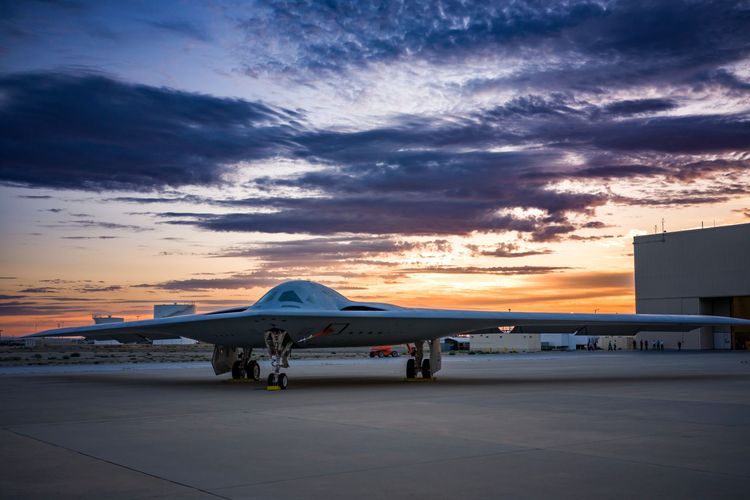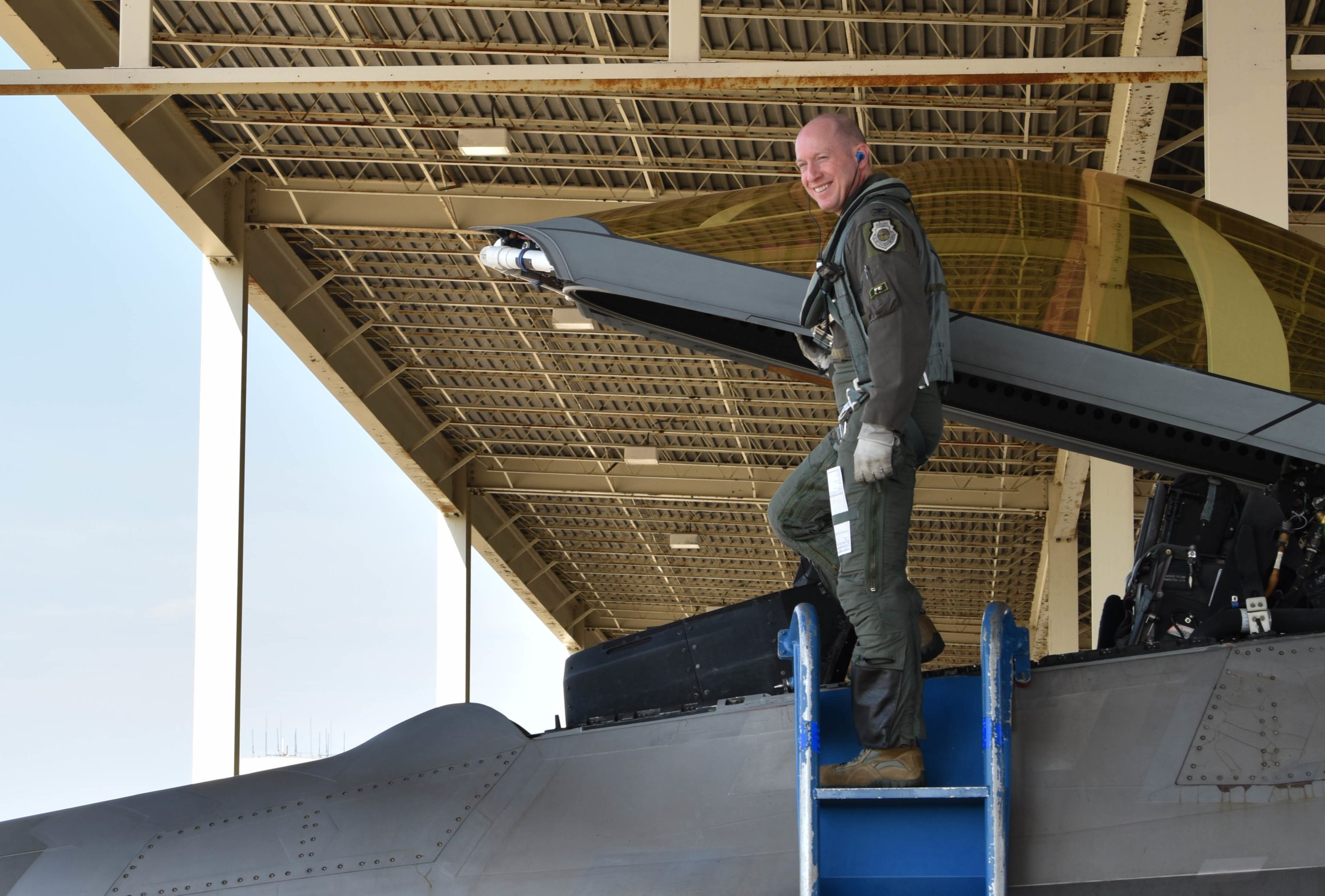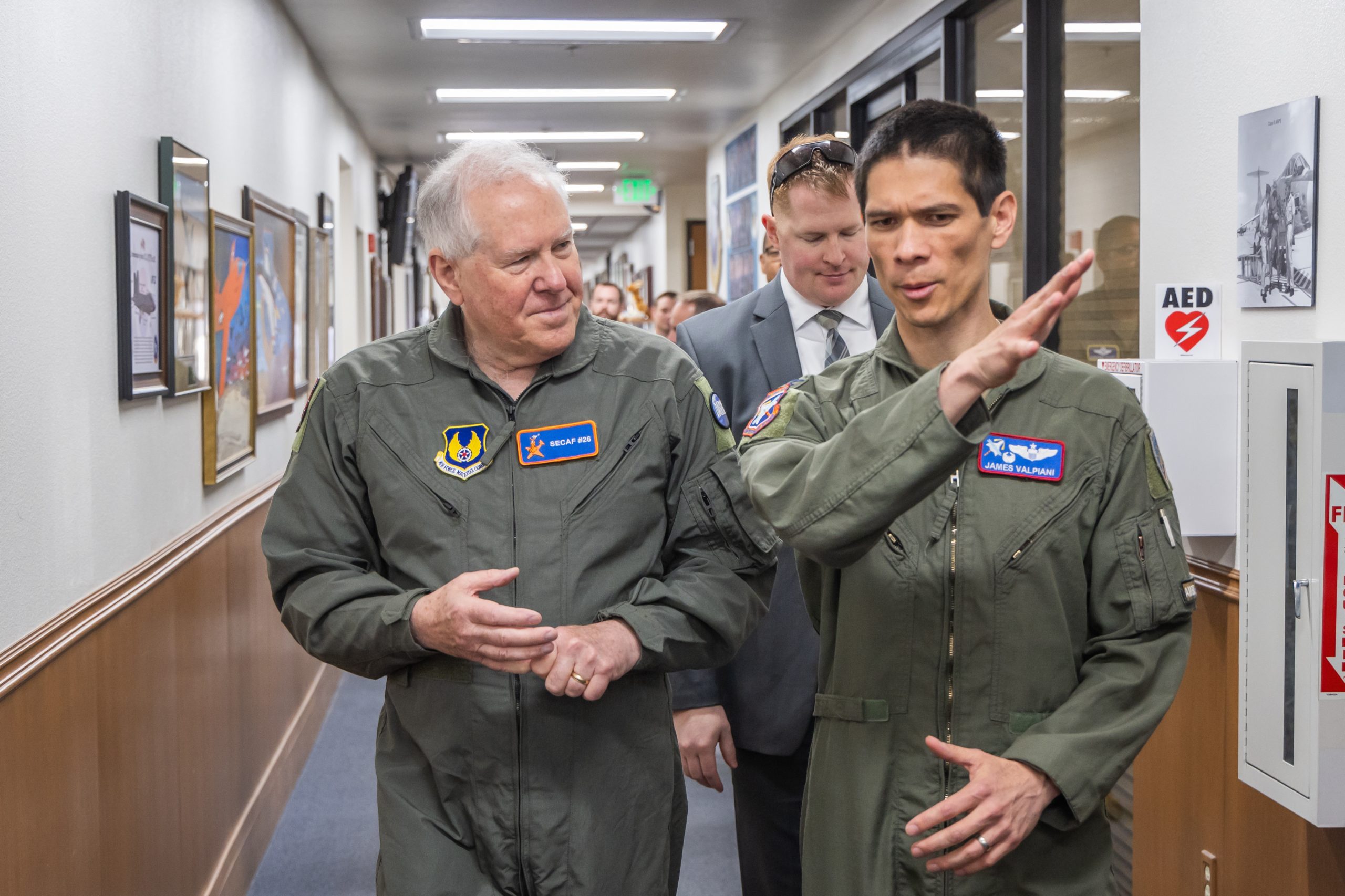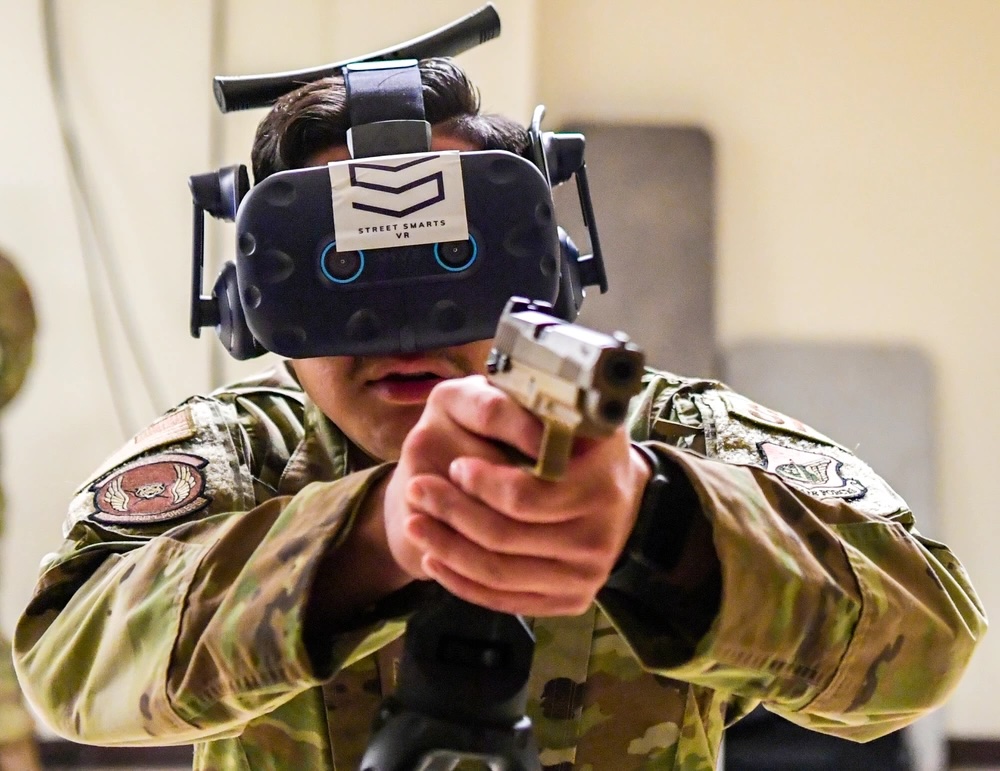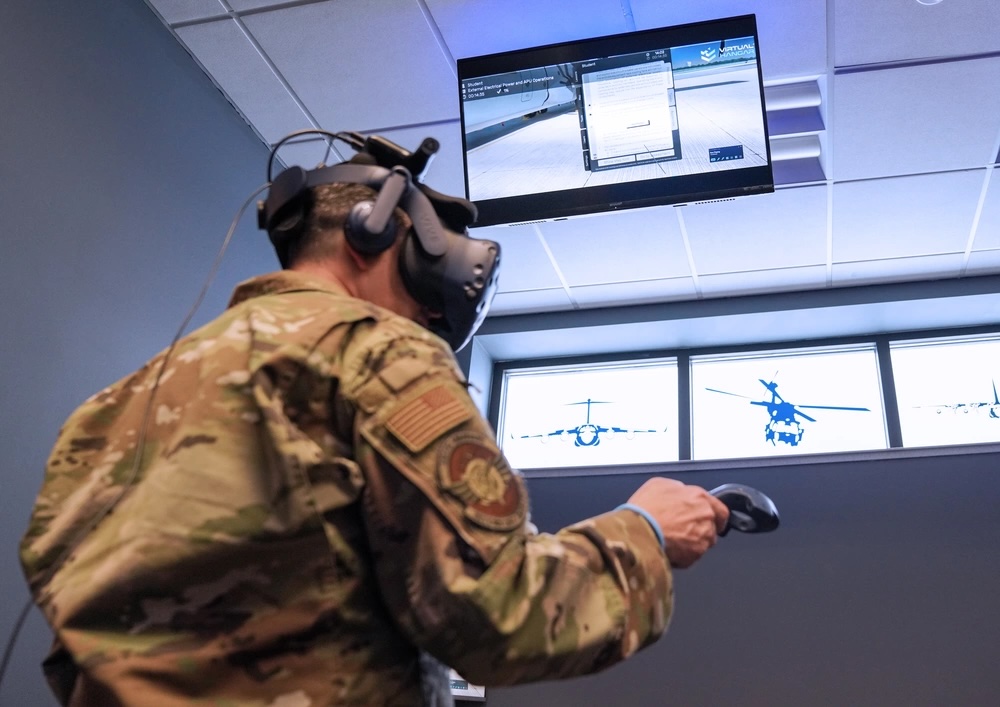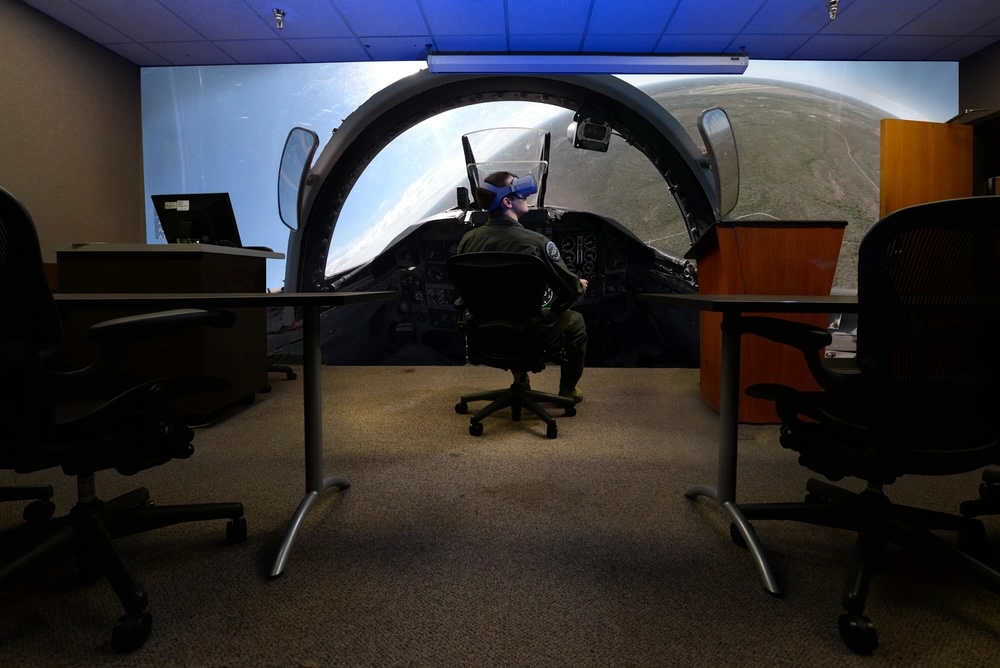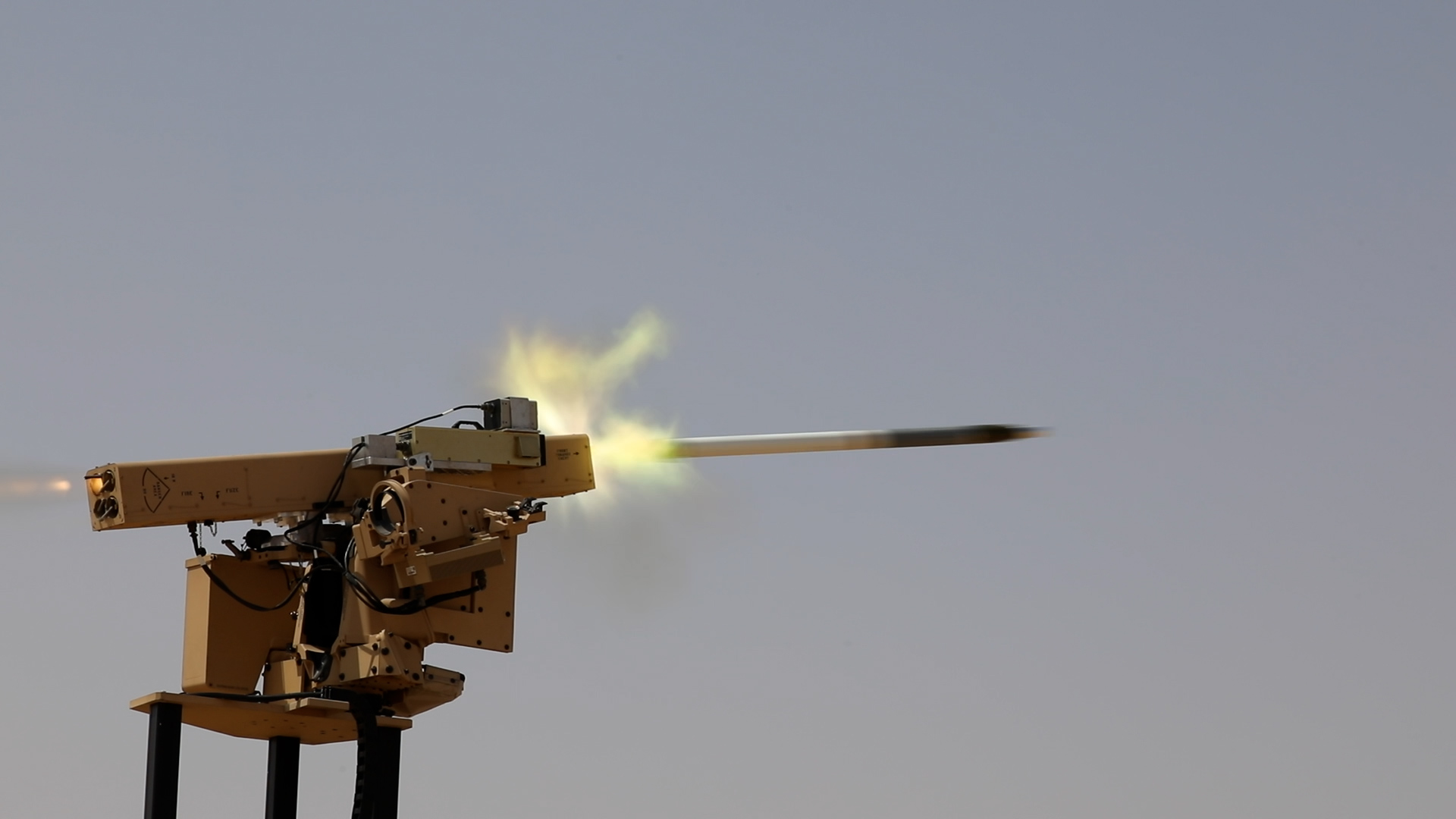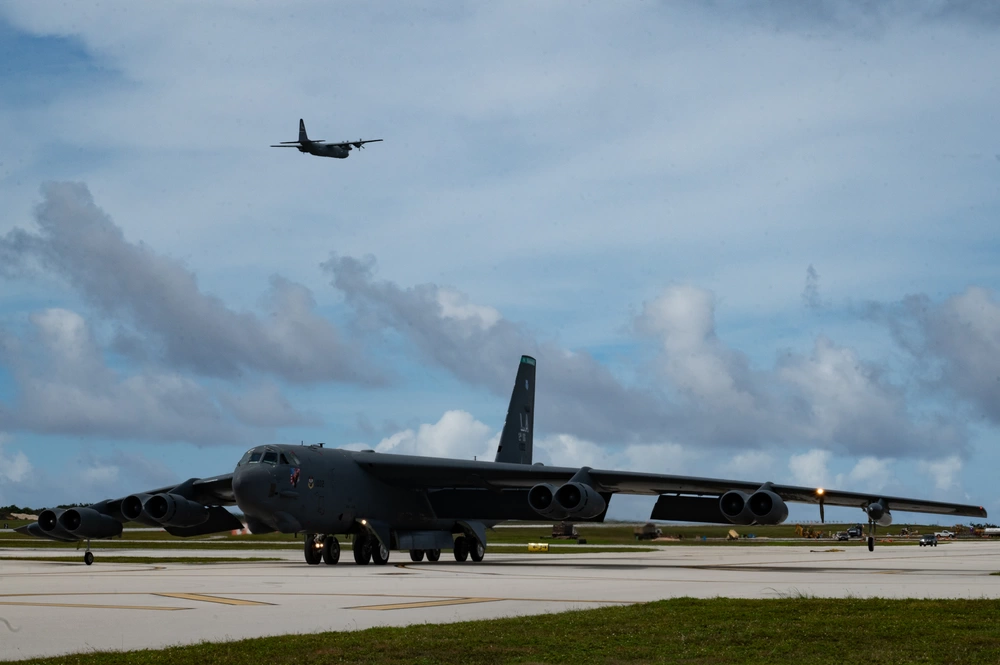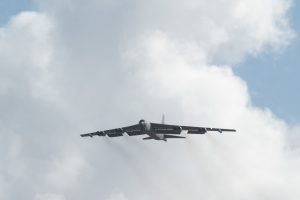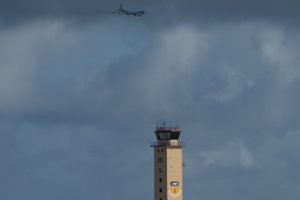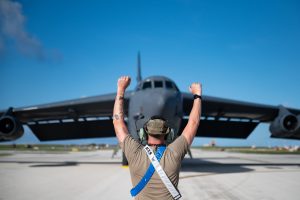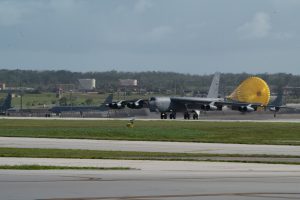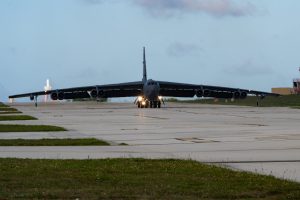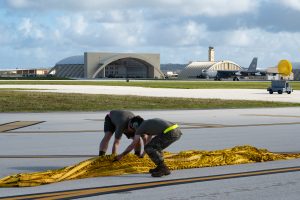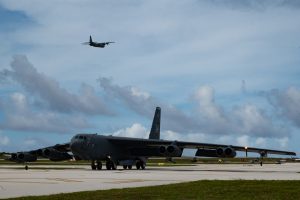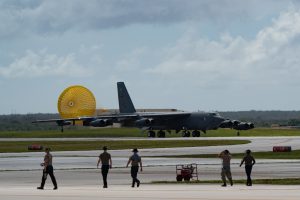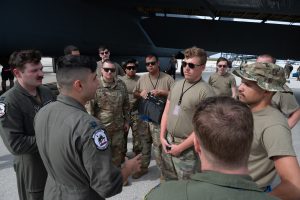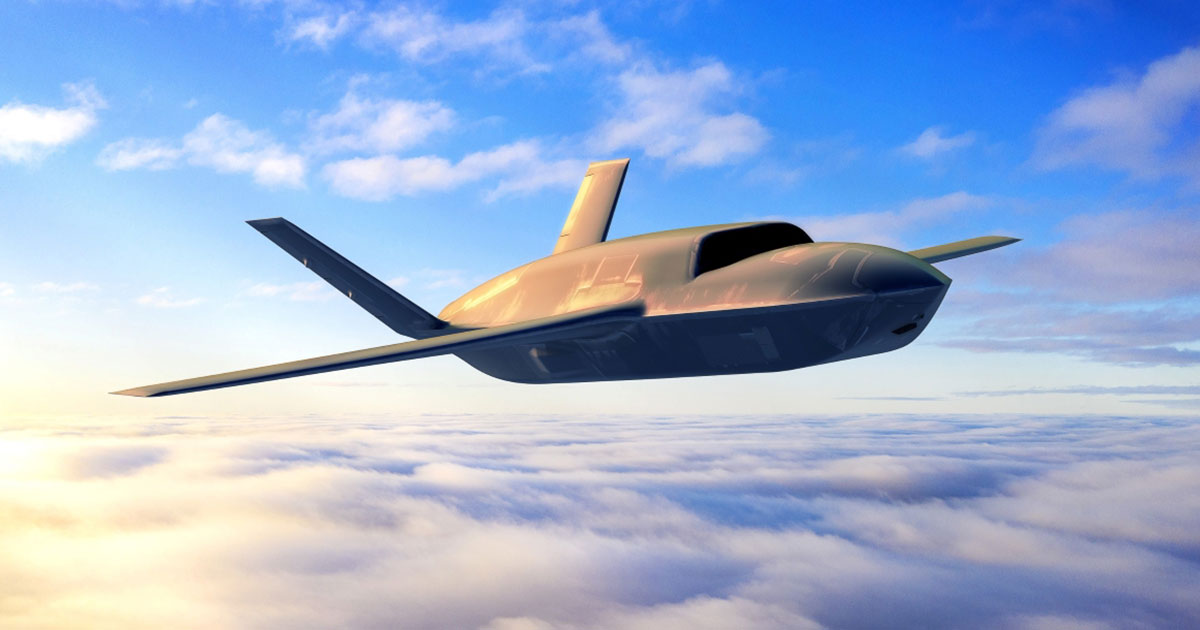While the land leg of the Air Force’s nuclear modernization effort faces escalating costs and a slipping schedule, two key parts of the air leg—the B-21 bomber and the Long-Range Stand-Off nuclear missile—are both in flight testing and making good progress, Air Force acquisition chief Andrew P. Hunter told lawmakers May 8.
The B-21 flight test program “is proceeding well,” Hunter said in response to questions from Sen. Tom Cotton (R-Ark.). “It is doing what flight test programs are designed to do, which is helping us learn about the unique characteristics of this platform, but in a very, very effective way.”
Hunter added that the B-21 is working its way through test objectives and “I’m encouraged with how that’s progressing.”
Looking ahead, “there are some key points still to come this year,” Hunter said of the tests, but he did not elaborate on what they are.
“I’m looking forward very much to talking to you when we can come back with data on those efforts and let you know where we stand,” Hunter told lawmakers, before adding that “as of today, good progress is being made. We believe we are on track.”
The B-21 made its first flight, which was not announced in advance by the Air Force, on Nov. 10, 2023. On that initial sortie, the aircraft took off from Northrop Grumman’s plant at Palmdale, Calif., and made a winding flight around southern California, landing at Edwards Air Force Base after about 90 minutes.
The service confirmed another flight took place Jan. 17 but declined to say whether that was the second ever flight of the test aircraft, nicknamed “Cerberus.”
Air Force officials have said that other flights have taken place, but the number of hops and the activities are being kept secret. The service has not even released any in-flight photographs of the B-21, its first new bomber in 30 years. Those available were taken by private photographers.
After first flight, the Pentagon awarded Northrop a contract for low-rate initial production of the B-21, but details of the award have been withheld. Northrop said it will absorb a $1.56 billion loss on the first five lots of B-21s, which are being built on a fixed-price basis. It has attributed the loss to inflation, higher-than-expected labor costs and supply chain issues.
Cotton later asked if the B-21 was the “first airplane … that would be considered to be fully digitally designed.” Hunter said it was probably not.
The “true experts on this topic” would question whether some elements were “really digital,” Hunter responded. “I would say it is the first aircraft where it is far more digital than not” among aircraft that “we’ve taken … into this stage of production and are moving towards fielding.”
Digital design has “helped us with being as on track as we are,” he added. The digital architecture has demonstrated “that the aircraft that we have built to test is meeting our requirements,” and that will lead to “I think, higher fidelity and higher likelihood of success.”
Other things that have contributed to the B-21’s success include enforcing “quite a bit of discipline in setting requirements and looking for mature technology.”
Cotton also asked for the status of the equally-classified AGM-181 LRSO, the nuclear missile that will succeed the AGM-86B Air-Launched Cruise Missile and equip both the B-52J and the B-21.
Hunter said the LRSO is “tracking well. The program is definitely on track to meet its timelines and deliver to the warfighter need date. And we are also doing well on cost for that program as well.”
RTX’s Raytheon Technologies is developing the LRSO, beating out Lockheed Martin for the work in 2020. Raytheon was selected even before the Technology Maturation and Risk Reduction (TMRR) phase of the program had concluded, with the service saying it was already clear at that point that the Raytheon offering was superior, and that time could be saved by advancing directly into the engineering and manufacturing development phase. Air Force officials have reported numerous test flights of LRSO have already taken place, and it is to be operational on the B-52 by the end of the decade. The Air Force has yet to reveal a photo or artist’s concept of the LRSO.
